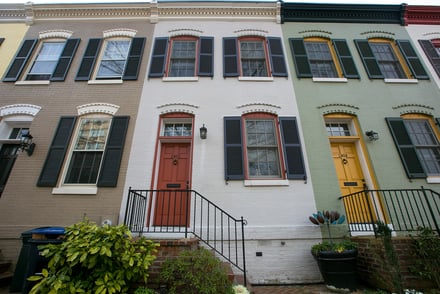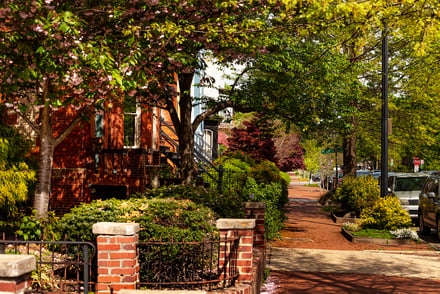When you purchase an old home, you probably expect to take on some significant upgrading and remodeling projects. Homeowners, whether motivated by resale or long-term residency, wants to make the old houses more comfortable and attractive. If budgetary concerns are a reality, you might decide to select projects that add value to your property. So, how do you know which upgrades are worth the investment?
One approach is to organize your remodeling projects by dividing them into four categories: basic upgrades, curb appeal, personal preference, and value-added.
Basic Upgrades
Common-sense upgrades to the basic structures bring the property up to the standards of the neighborhood and protect its value. Roofs, gutters and downspouts, and chimneys that function well and protect basement and interior walls from water damage are necessary repairs. A suitable furnace and electrical system, solid floors, and walls that are in good repair are evidence of a well-maintained home.
You don’t have to upgrade all of it. Instead, you can focus on regular maintenance and smaller, cheaper improvements that keep everything in good working order. If your interest is for resale, you should make the type of upgrades that are in line with the value of other homes in the neighborhood.
Curb Appeal
Old homes in the Washington DC area feature exterior brickwork that conveys a rich sense of history. When these homes are well maintained, the resulting curb appeal increases their value, as well as that of the entire neighborhood. Classic entryways, sturdy retaining walls, and well –tended landscaping define style – elegant to chic – and hint of well-designed and comfortable interiors. Brick facades that are restored and maintained using appropriate tuckpointing materials and techniques preserve the historical charm and the structural integrity for generations.
Personal Preference
An old house is not just a renovation project; it’s your home. Owners want the changes they make to meet their lifestyle needs and preferences. Those who intend to live there for many years have a desire to make upgrades that accommodate changes in family composition, activities and use of space. Converting basements and attics, upgrading bathrooms and kitchens, and adding patios or decks are common projects that support growing and aging families.
If your old home renovation goal involves a resale, you should be wary of upgrades that are not universally valued. There is no harm in adding features that are highly individualized but don't expect those additions to add much to the value. Here are two examples:
- Transforming a bedroom into a studio.
- Eliminating a bedroom to extend a room.
Value Added
If you intend to sell your old house, renovation projects that increase the value of the real estate will be high on your list. Unfortunately not all home improvement projects achieve the best cost-to-value results. The 2018 Cost vs. Value report analyzes and reports the average payback for 20 common professional remodeling projects.
The data for the Washington DC area indicates that three exterior remodeling projects achieve the highest ranking:
- Steel entry door replacement (101.3%)
- Garage door replacement (102%)
- Manufactured stone veneer (104.9%)
On the other hand, the lowest ranking is for two interior projects:
- Master suite addition (51.2%)
- Bathroom remodel (56.1%)
Regardless of the project that you are considering, remember that your primary residence is not just a house, it's your home. And remember, even with the redos that are known to add value, the chances are good that you will spend far more money than you will get back in return.
Note: Renovation of an old house, especially one located inside a historic district, can be an intimidating process. For information on permitting and architectural styles and material, contact the Capitol Hill Restoration Society.
Renaissance Development, a leader in brick restoration and historic preservation, specializes in the restoration of a historic brick building’s mortar joints using traditional methods (tuckpointing) and materials. Contact us for a free site visit and project quote.
1/25/18 3:08 PM


